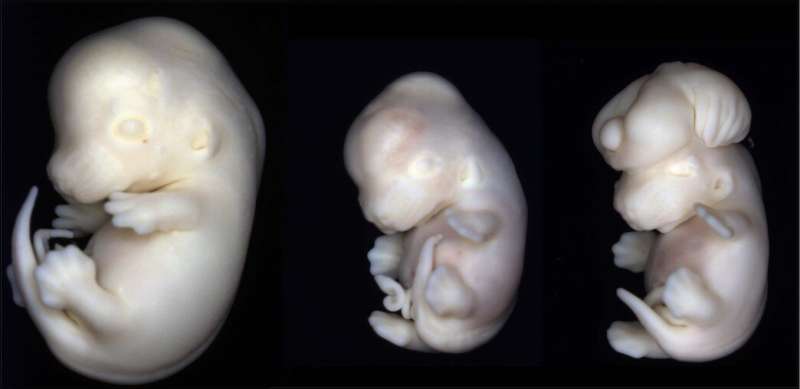Study reveals how epilepsy and migraine drug causes birth defects

Valproic acid—a drug used to treat epilepsy, migraine, and bipolar disorder—can cause birth defects when taken during pregnancy. Now, a study publishing June 14 in the open access journal PLOS Biology by Bill Keyes of the Institute of Genetics and Molecular and Cellular Biology, France, and colleagues reveals one reason why: valproic acid (VPA) puts some cells of the developing nervous system into senescence, a kind of halted state that keeps them from growing and dividing correctly.
VPA is widely used to treat a number of illnesses. However, since its initial use, there have been many thousands of cases of women taking VPA during pregnancy and subsequently giving birth to children with birth defects, including spina bifida, facial alterations, and heart malformation. In addition, about a third of exposed infants develop cognitive impairment and Autism Spectrum Disorder.
In the new study, Keyes and colleagues used both human organoids—three-dimensional clusters of human cells grown in the lab—as well as mice to study embryonic exposure to VPA. They discovered that VPA induces cellular senescence in neuroepithelial cells, the stem cells that give rise to the central nervous system. Moreover, the researchers pinpointed one particular molecule, p19Arf, as being responsible for this VPA-induced senescence. When the team used mice lacking p19Arf, VPA exposure during pregnancy no longer caused microcephaly (small head size) or changes to gene expression patterns associated with Autism Spectrum Disorder, although VPA did lead to other defects even in these mice.
The work is one of the first to associate cellular senescence with developmental defects, the authors say. “Overall, the discovery that atypical activation of senescence in the embryo can perturb development raises the intriguing possibility that it may also contribute to defects in developmental contexts beyond those we studied here.”
Source: Read Full Article


